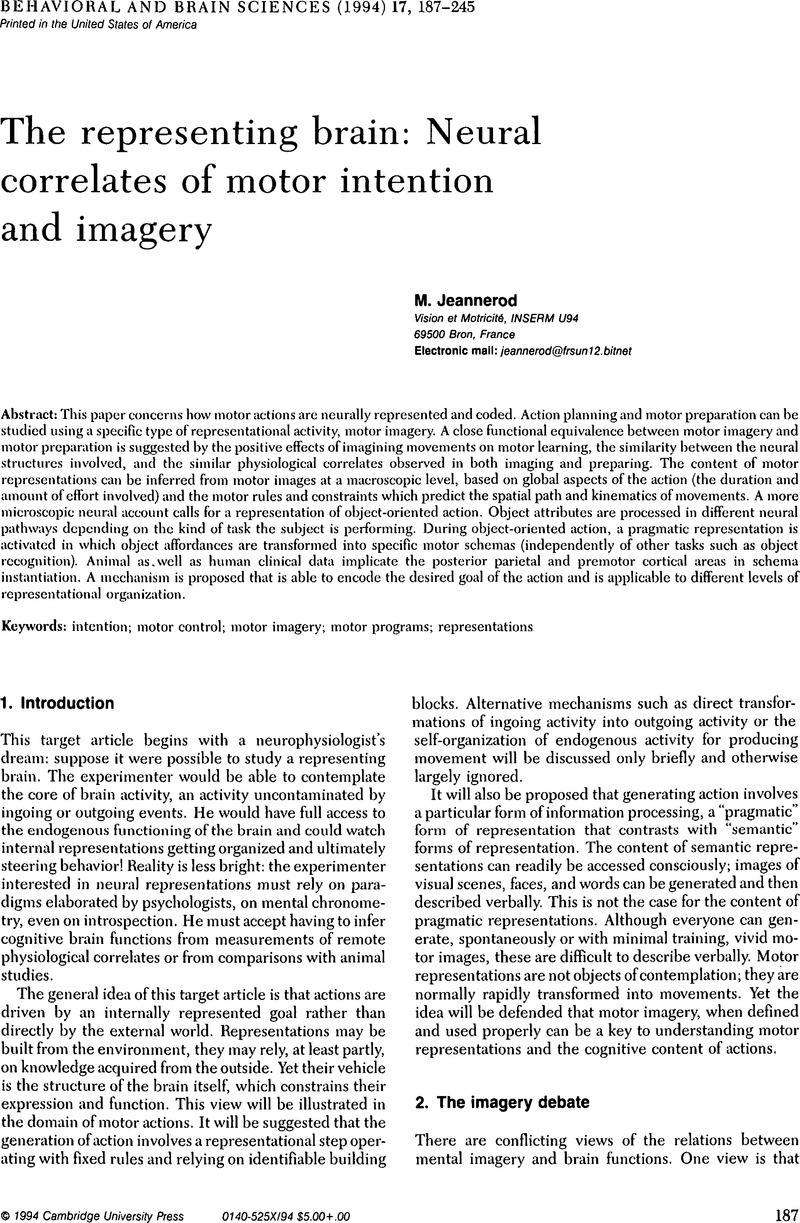Crossref Citations
This article has been cited by the following publications. This list is generated based on data provided by Crossref.
Kohl, Robert M.
and
Fisicaro, Sebastiano A.
1996.
Response intention and imagery processes: Locus, interaction, and contribution to motor learning.
Behavioral and Brain Sciences,
Vol. 19,
Issue. 4,
p.
760.
Grant, Stuart C.
and
Schmuckler, Mark A.
1996.
Alternative origins of motor images.
Behavioral and Brain Sciences,
Vol. 19,
Issue. 4,
p.
759.
Rossetti, Yves
and
Rode, Gilles
1996.
In search of nonvisual motor images.
Behavioral and Brain Sciences,
Vol. 19,
Issue. 4,
p.
762.
Jeannerod, M.
1996.
Motor representations: One or many?.
Behavioral and Brain Sciences,
Vol. 19,
Issue. 4,
p.
763.
Goldenberg, Georg
and
Hagmann, Sonja
1997.
The meaning of meaningless gestures: A study of visuo-imitative apraxia.
Neuropsychologia,
Vol. 35,
Issue. 3,
p.
333.
Buxbaum, Laurel J.
Johnson-Frey, Scott H.
and
Bartlett-Williams, Megan
2005.
Deficient internal models for planning hand–object interactions in apraxia.
Neuropsychologia,
Vol. 43,
Issue. 6,
p.
917.
Buxbaum, Laurel J.
Haaland, Kathleen Y.
Hallett, Mark
Wheaton, Lewis
Heilman, Kenneth M.
Rodriguez, Amy
and
Rothi, Leslie J. Gonzalez
2008.
Treatment of Limb Apraxia.
American Journal of Physical Medicine & Rehabilitation,
Vol. 87,
Issue. 2,
p.
149.
Molina, Michèle
Tijus, Charles
and
Jouen, François
2008.
The emergence of motor imagery in children.
Journal of Experimental Child Psychology,
Vol. 99,
Issue. 3,
p.
196.
Guilbert, Jessica
Jouen, François
Lehalle, Henri
and
Molina, Michèle
2013.
Imagerie motrice interne et simulation de l’action chez l’enfant.
L’Année psychologique,
Vol. Vol. 113,
Issue. 3,
p.
459.
Guilbert, Jessica
Jouen, François
Lehalle, Henri
and
Molina, Michèle
2013.
Imagerie motrice interne et simulation de l’action chez l’enfant.
L’Année psychologique,
Vol. 113,
Issue. 03,
p.
459.



